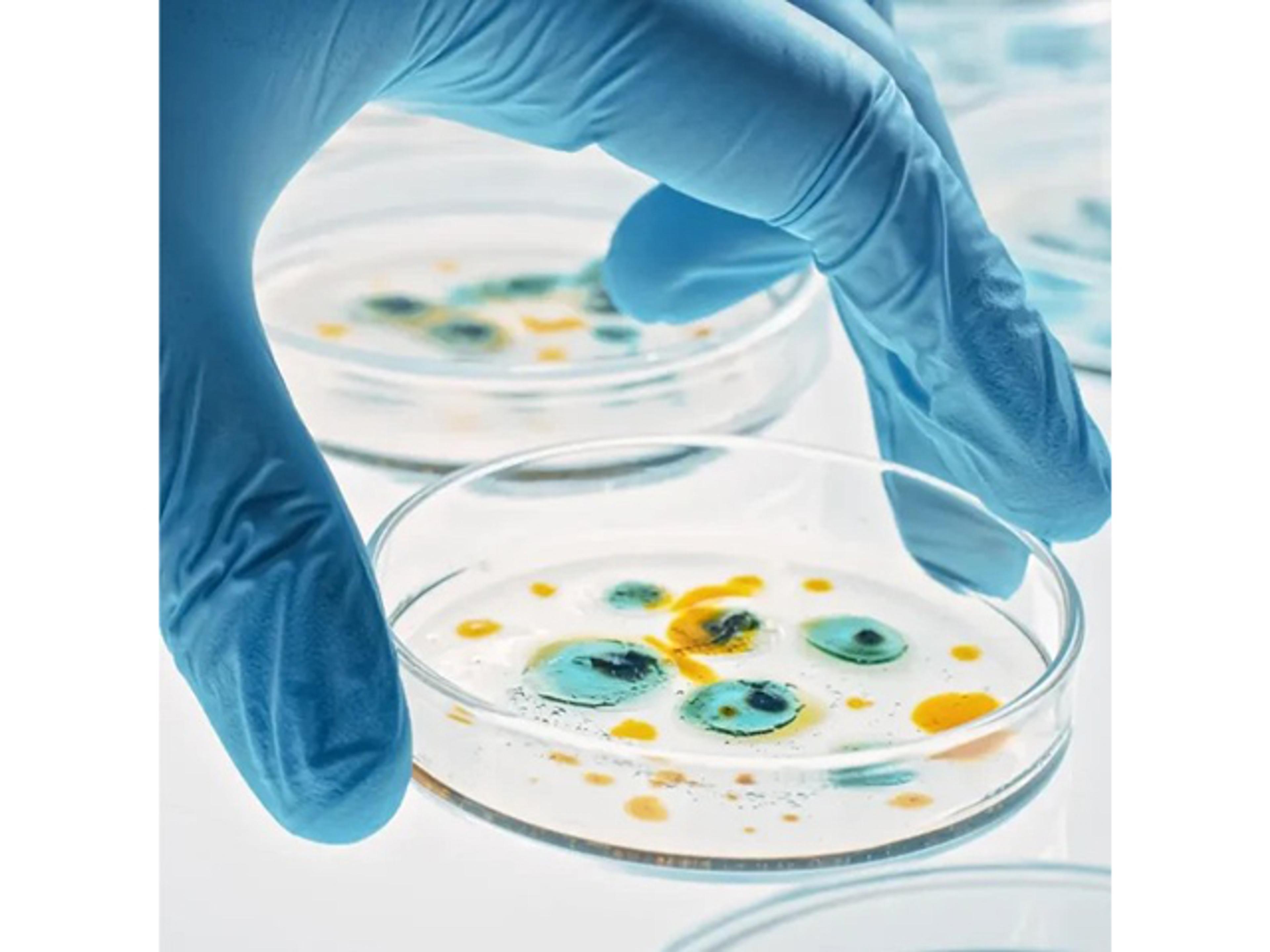First-of-its-kind 3D bone marrow model advances blood cancer research
Crown Bioscience’s in vitro model offers a physiologically relevant tool to evaluate drug efficacy for hematological diseases
6 Aug 2025

Dr. Talita Stessuk, the Bone Marrow Niche Platform Lead Scientist at Crown Bioscience in the Netherlands
Blood cancers like leukemia and multiple myeloma are notoriously difficult to develop treatments against, and part of the challenge lies in where they begin. These malignancies originate in the bone marrow, a complex and dynamic microenvironment that plays a crucial role in how these cancers grow and respond to therapy. In vitro models are essential to efforts to better understand and develop drugs against these diseases, but traditional models fall short of mimicking the bone marrow microenvironment, making it harder to predict how treatments will perform in clinical trials and in real patients.
To address this, Crown Bioscience has developed a 3D bone marrow niche (BMN) model, a novel in vitro system that more closely mimics the conditions within human bone marrow. The goal? Help preclinical researchers test therapies more effectively and uncover how these cancers grow, resist treatment, and interact with immune cells. We spoke with Dr. Talita Stessuk, one of the scientists leading this work at Crown Bioscience, to understand how the model works and what it could mean for the future of hematologic oncology.
Building bone marrow in the lab
Stessuk's role is focused on advancing preclinical drug efficacy testing in hematological malignancies using complex 3D culture systems, high-throughput screening (HTS) assays, and high-content imaging (HCI) analysis.
“The BMN platform was developed in response to a critical need in the hemato-oncology field for biologically relevant in vitro models that mimic the highly vascularized and fibrous architecture of the human bone marrow,” she says. “Traditional in vitro cultures of hematopoietic cells are based on scaffold-free approaches which fail to replicate the complexity of the bone marrow microenvironment.”
Unlike traditional cultures that keep cells in simple liquid suspension, Crown Bioscience’s model consists of a 3D scaffold based on a bio-functional hydrogel. Within this matrix, stromal and endothelial cells form an environment that mirrors the spatial organization of real bone marrow, along with the key cell-cell and cell-extracellular matrix interactions that drive disease behavior. Once a proper microenvironment is established, patient-derived tumor cells are introduced into this system, and autologous immune cells can also be added to more closely replicate the native microenvironment.
The result is a model that provides a much more physiologically relevant system for researchers to study tumor behavior, immune evasion, and perform preclinical drug screening and toxicity testing.
Crucially, the model also gives researchers more time. In standard suspension assays, cancer cells often die within a few days, sometimes before researchers can learn anything useful. In contrast, the mesenchymal-endothelial scaffold in the BMN provides growth factor cocktails to keep blood cancer cells alive and proliferating for up to a week – long enough to gather meaningful data on drug efficacy and toxicity.
“In contrast to classical in vitro approaches, tumor cells thrive and proliferate in the BMN,” says Stessuk. “As a result, BMN drug testing readouts are of clinical and biological relevance when compared to studying drug responses in a population of apoptotic cells in suspension.”
A closer look at the drivers of drug efficacy
The preclinical utility of the BMN model is well established; it has shown dose-dependent response to specific Standard of Care (SoC) drugs that align well with known clinical profiles. Built in 384-well plates, the model is designed for HTS and HCI, and can test virtually any therapeutic modality, from small molecules to antibody-based compounds and cell therapies.
By recreating the peri-vascular and stromal microenvironment of the human bone marrow, the model can also help uncover how drug responses are influenced by interactions between malignant cells and their surrounding cellular ecosystem, including endothelial cells, mesenchymal stromal cells, and immune cells.
“With the full picture of the bone marrow architecture and cellular landscape, it is possible to advance our understanding of mechanisms of action, off-target effects, and toxicity of different treatment modalities for specific hematological malignancies, such as acute myeloid leukemia and multiple myeloma” Stessuk says. “In this way, the BMN platform can be used for hemato-oncology drug discovery projects and potentially support IND submissions.”
The model’s dynamic behavior adds further value. One of the most interesting observations, says Stessuk, is that hematopoietic stem and progenitor cells (HSPC), along with immune cells, can migrate through the hydrogel and begin forming colony-like clusters near the vascular networks.
“This is in line with the in vivo counterpart where the peri-vascular site supports the growth and maintenance of cancer cells,” she enthuses. “It’s also valuable to observe both the remodeling of the mesenchymal-endothelial networks and hematopoietic cell migration upon compound treatment at different doses and time points.”
This can help determine not only the efficacy side of the assay, but also its functionality and associated BMN behavior.
Shedding light on drug resistance and immune evasion
Crown Bioscience’s BMN model can also offer valuable insights into immune evasion and treatment resistance – two major challenges in oncology. Because the platform can incorporate immune cells, researchers can track interactions between malignant hematopoietic cells and autologous immune cells, or introduce specific immune subtypes to study their behavior and function in response to cancer cell signals. “The BMN cells can also exert a protective effect via paracrine signaling that shields cancer cells from immune cell attack,” adds Stessuk.
The BMN system also replicates physical mechanisms of resistance, including cell adhesion-mediated drug resistance (CAM-DR). In this process, cancer cells attach to structural proteins in the bone marrow, triggering survival pathways that blunt the effects of therapy. In the BMN model, cells bind to fibronectin, collagen, and other matrix components just as they do in real bone marrow. “This can lead to the recapitulation of CAM-DR mechanisms, which trigger anti-apoptotic pathways and affect both immune-mediated killing and drug efficacy,” explains Stessuk. This unique capability of the model could help scientists observe how cancer cells resist treatment and how those defences might be overcome.
What’s next? More cancers, more complexity, more utility
Crown Bioscience is already working to expand the system’s capabilities. Originally focused on acute myeloid leukemia and multiple myeloma, the model is now being adapted to study other hematological malignancies, including acute lymphoblastic leukemia, chronic lymphocytic leukemia, and chronic myeloid leukemia.
To further improve its biological relevance, the team is integrating additional bone marrow-resident cell types, such as osteoclasts and osteoblasts, that play key roles in shaping the bone environment and influencing tumor growth.
“We’re also investigating the feasibility of using the BMN platform to support metastasis assays,” adds Stessuk. “Crown Bioscience’s expertise in 3D cultures of tumoroids and organoids allows us to take the BMN as a vascularized compartment to interface solid tumors and assess in vitro metastases.”
The platform’s analytical capabilities are also evolving. “We already have a good range of assays for biomarker validation at baseline; however, we are working on expanding the BMN platform capabilities by adding flow cytometry and RNA-seq assays as endpoint readouts,” says Stessuk.
Finally, the platform is garnering major interest for toxicity testing.“We know that the bone marrow is a major site for toxicity in clinical trials, and one that has been traditionally hard to model. We’ve spoken to many researchers who see this platform as a potental new tool for toxicity testing. Our goal is to provide those researchers with the best tools we can, so we are investigating the BMN for toxicity testing.” states Stessuk.
With these developments, the BMN platform will offer researchers an even more powerful, physiologically relevant system to investigate treatment responses, resistance mechanisms, and disease progression in blood cancers.
“The feedback we’ve got so far is extremely positive,” says Stessuk, “So we are very excited to move forward and work on upcoming developments for the platform,” she concludes.
Want to know more?
- Explore the technical specifications of the 3D bone marrow model in this factsheet
- Plus, download this poster shown at AACR 2025
- Alternatively, hear more from Dr. Stessuk in this recent on-demand webinar presented July 2025

